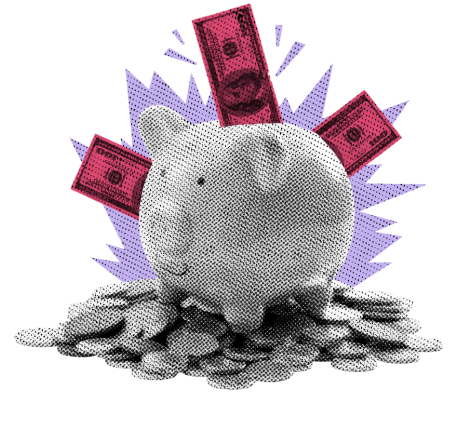
Housing costs are at 25-year highs. The bond market explains why.
KEY TAKEAWAYS
-
Mortgage rates follow 10-year Treasury yields, not directly the Fed
-
Spreads spike in crises, driving rates even higher
-
Loan originations collapsed due to high rates, low turnover, and low supply
-
Housing is stuck at all-time high prices plus 25-year high financing costs
-
Fed policy affects short-term loans, builders, and landlords
MY HOT TAKES
-
The Fed isn’t in full control of mortgage rates
-
Fiscal policy (deficits and tariffs) is quietly keeping long-term rates elevated
-
Housing costs are being squeezed from both sides—prices and financing
-
Lower Fed Funds rates could actually ease housing inflation, not worsen it
-
Bond vigilantes, not Powell, are running the show
-
You can quote me: “When it comes to housing, lower Fed Funds rates are not inflationary—they’re deflationary.”
Interest in interest. Perhaps you are in the minority of 39% of homeowners that own their home outright. Put differently, 61% of US homeowners currently have a mortgage. Maybe, you are in the minority 34% of Americans that rent. That’s a lot of stats for the first few sentences, isn’t it. The reason I decided to dive into this issue is that we have been talking a lot about interest rates lately and I thought that it may be productive to understand better how interest rates might directly affect you.
Boiling down all those numbers above, 40% of Americans under the age of 35 rely on a mortgage to finance their housing. As I am sure that you know, mortgage rates are directly impacted by prevailing interest rates. Fixed rate mortgages make up about 65% of borrowing and the rest are made up of Adjustable Rate Mortgages (ARMs) and Balloon/Hybrid Mortgages, which are also subject to adjustments.
Let’s start by looking at fixed rate mortgages, typically 30 years. It seems like I can’t go a single week of my life without hearing some sort of anecdote about this person or the other locking in some ridiculously low mortgage rate in 2020 or 2021. It is true that rates were ridiculous during that time; not only were they low, but they were at historic lows. Have a look at the following chart, then keep reading.
You can see by this chart, the round-trip taken by mortgage rates over the last quarter century. Sub-4% mortgage rates were the norm for the better part of the 2010s but hit rock bottom right in the midst of the pandemic, when it turns out that housing demand for ownership also picked up. Despite what many may think, mortgage bankers cannot simply charge whatever rates they feel like. No. Rates are based on Treasury Note yields plus a spread representing risk premium. Spreads aside, if 10-year Treasury Note yields go up, so do mortgage rates, and vice versa. Spreads do change over time but for the most part, riskier loans come with larger spreads. Check out the following chart and keep reading.
I know that this one is busy, if not scary looking. Please bear with me–I got you. The top panel of this chart shows 10-year Treasury Note yields (orange line) and 30-year fixed mortgage rates (white line). You can see how they have moved in almost lock-step for the past 20 years. The green shaded area between the two lines is the “spread” between the two rates. The panel on the bottom tracks that spread (gold line). You can see how it spiked during the Global financial crisis (left-hand side of the chart). That spike is the result of banks charging higher premiums to account for the credit risk during that period. You will note that in the decade that followed, that risk premium was relatively stable within a 50 basis-point range. A second spike occurred at the start of the pandemic, which I hope that I don’t have to explain. Spreads declined and hit a recent low in 2021. But that would all change in the years that would follow, leading up to today.
You can see how mortgage rates jumped in 2022, following 10-year Treasury yields. Spreads also launched to 20-year highs during that period. So, it’s a good time to be a mortgage lender, but there is a caveat. Loan originations are down! Are you surprised to hear that? According to the Mortgage Bankers Association (MBA), originations are down to $1.9 trillion from $4.4 trillion in 2021. If you haven’t heard, the housing market is in a bit of a trough.
Why do you suppose that originations are low? Well, there are 3 primary drivers. High interest rates, lower turnover, and low housing supply. The first reason is obvious–less demand for more expensive mortgages–sticker shock. Low housing turnover is the result of the “lock-in effect,” where many homeowners locked in rock-bottom rates during the pandemic refi-boom. Many are reluctant to give up their cheap debt-finance, which also makes sense. The third driver, low supply, is impacted by the second. Even if people want to sell their homes, they may be dragging their feet waiting for mortgage rates to normalize. Beyond that, for-sale inventories are historically low. Because of this, home prices are high. You know, supply and demand.
So we are in a situation where not only are homes expensive (all-time highs according to the FHFA US House Price Index), but financing is at 25-year highs. All that is driven either directly or indirectly by mortgage rates, which are driven by 10-year Treasury Note yields. So, indeed, interest rates do have some real impacts.
Let’s take a step back. It would seem that lower interest rates could be helpful in the beleaguered housing market. Before you go on bashing the Fed, remember that it does not control 10-year Treasury yields. No. Those yields are in the hands of bond traders and bond vigilantes. Despite the common misconception, longer maturity yields have very little to do with the Fed Funds rate which only have a notable influence on shorter maturity yields. When investors expect inflation in the future, they sell their fixed coupon bonds because real yields (accounting for inflation) diminish. That selling causes yields to go higher to the point at which investors feel like they are covered for risk and inflation. Yes, inflation has been a problem since 2021, but more recently long-term inflation has had two new drivers: the rising deficit and tariffs. Regardless of what the Fed thinks, says, or does, bond investors are expecting inflation, which is why 10-year Treasury Note yields AND fixed-rate mortgages remain elevated. It would seem that those rates are more closely tied to fiscal policy–controlled by the Federal Government–not monetary policy–controlled by the Fed. Now, the Fed can loosely impact longer-maturity yields through quantitative easing (QE), but that is rare and the Fed is still running off its balance sheet from the last QE.
So, is the Fed completely helpless in this odd housing market? Not at all! Remember those non-fixed mortgage holders from above (the 35%)? Those are all tied to shorter maturity benchmarks like the Secured Overnight Financing Rate (SOFR) and the Prime Lending Rate which are both directly tied to… wait for it… wait for it… the Fed Funds rate. What’s more, builders’ construction loans are almost exclusively floating rate, so lower rates can impact supply because it is cheaper to build. As for landlords, many of them use adjustable rate commercial loans which are also tied indirectly to the Fed Funds rates. SO, as I have posited many times, when it comes to housing, lower Fed Funds rates are not inflationary, but rather deflationary. If your landlord pays less, they are less likely to continue hiking rents.
We all need housing. Some of us own and some rent. For those owners that have mortgages AND those who rent, interest rates have a firm grip on you. Those interest rates are not only under the control of the Fed, but also DC lawmakers. With housing making up the largest share of household spending (~33% according to the Bureau of Labor Statistics), interest rates and where they are going should be very much your concern. Stay interested…stay focused.
YESTERDAY’S MARKETS
Stocks had a mixed close in sideways trade yesterday, typical of mid-August summer’s day. Perhaps traders–unsure of what it all meant–were too busy watching the world’s most powerful leaders playing nice in front of the cameras. More likely, traders were keeping their powder dry ahead of the surge of retail earnings that begin today.

NEXT UP
-
Housing Starts (July) may have declined by -1.8% after climbing by 4.6% in June.
-
Building Permits (July) probably slipped by -0.5% after easing by 0.1% in the prior period.
-
Fed Governor Michelle Bowman will speak again today. She is a super-dove.
-
Important earnings today: Home Depot and Toll Brothers.
.png)

